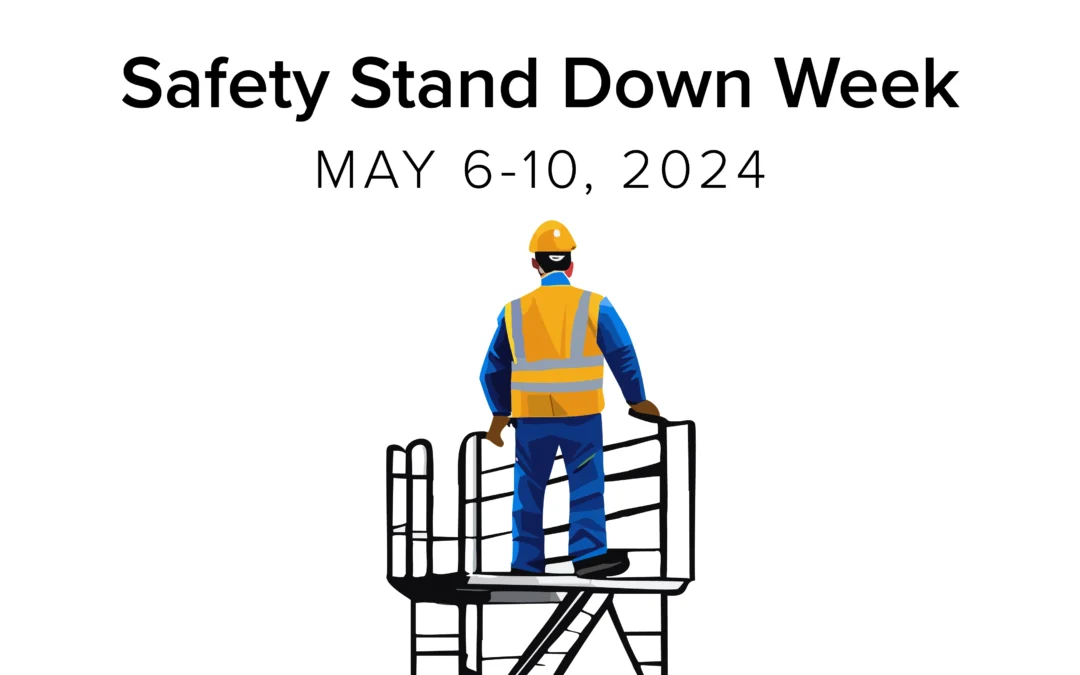Construction Safety Week is an annual event that brings individuals and companies together to celebrate the critical work done by people in the construction industry and has become a reminder of how safety is the foundation for everything they do.
OSHA is also observing its 13th annual Fall Prevention Safety Stand Down Week, which raises awareness about fall hazards on a national level, and strives to prevent fatalities and injuries resulting from falls in construction.
These week-long awareness events are not just a once-in-a-year reminder, but should be part of our efforts to consistently train so our people go home safe every day, throughout the year.
Safety Week and the Focus Four
Since its inception in 1994, OSHA’s Focus Four initiative has targeted the leading causes of fatalities in construction:
-
- Falls
- Electrocution
- Struck By/Hit By
- Caught In/Between
Historically, falls from elevation are the most prevalent and deadly, and this is true today.
Falls are PREVENTABLE
In 2022 alone, out of 1,069 construction-related fatalities, an alarming 37% were due to falls. Too many workers – family members, friends and other loved ones – are losing their lives to falls in construction. And, what’s most unfortunate is that falls are completely preventable.
Various types of engineered systems exist to prevent, restrain and arrest falls that occur. These fatalities are inexcusable. Employers must value the safety of their people until it is habitualized by every worker. Organizations do this by offering comprehensive training and equipping workers with the necessary tools to ensure they return home to their loved ones each day.
The Fifth Focus
The Focus Four have persistently topped the list of construction fatalities even before OSHA’s establishment. However, a growing concern now looms over the industry – a Fifth Focus: mental health.
The rate of suicide in the construction industry is four times higher than average. According to the Center for Disease Control (CDC), a staggering 53.3 out of every 100,000 construction workers commit suicide. (The average suicide rate in the U.S. is 12.93 per 100,000 individuals.) This means that each year, about 5,000 construction workers die from suicide – five times more than from work-related injuries. Why is this industry facing such a devastating mental health epidemic?
The instability that comes with cyclical employment paired with long or irregular work hours adds stress and unpredictability. Many construction workers are regularly exposed to heat and cold, the elements, as well as hazards on the job site like electrical wiring, heavy machinery, ladders, cramped spaces, scaffolding and other dangerous equipment, creating risk and high-stress environments.
These individuals endure long periods of time away from their families to meet the relentless demands of accelerated construction schedules across the nation. Prolonged stress and physical exhaustion lead to an increase in the risk of suicide.
Addressing the mental health crisis demands a united effort to raise awareness and implement robust support systems within the construction sector.
Boost Worker Safety and Mental Health with Tyfoom
Tyfoom is dedicated to workplace safety and mental health advocacy, and empowers companies with comprehensive training across various critical topics, from fall prevention to mental health. By leveraging Tyfoom’s extensive library, and your own trainings, Tyfoom equips users with quality training and support information, fostering a safer, healthier work environment for all.
Build a better world for those who build our world: Eliminate preventable tragedies and create a workplace culture that values both physical safety and mental health. To learn how, schedule a meeting to speak with a Tyfoom training consultant.

